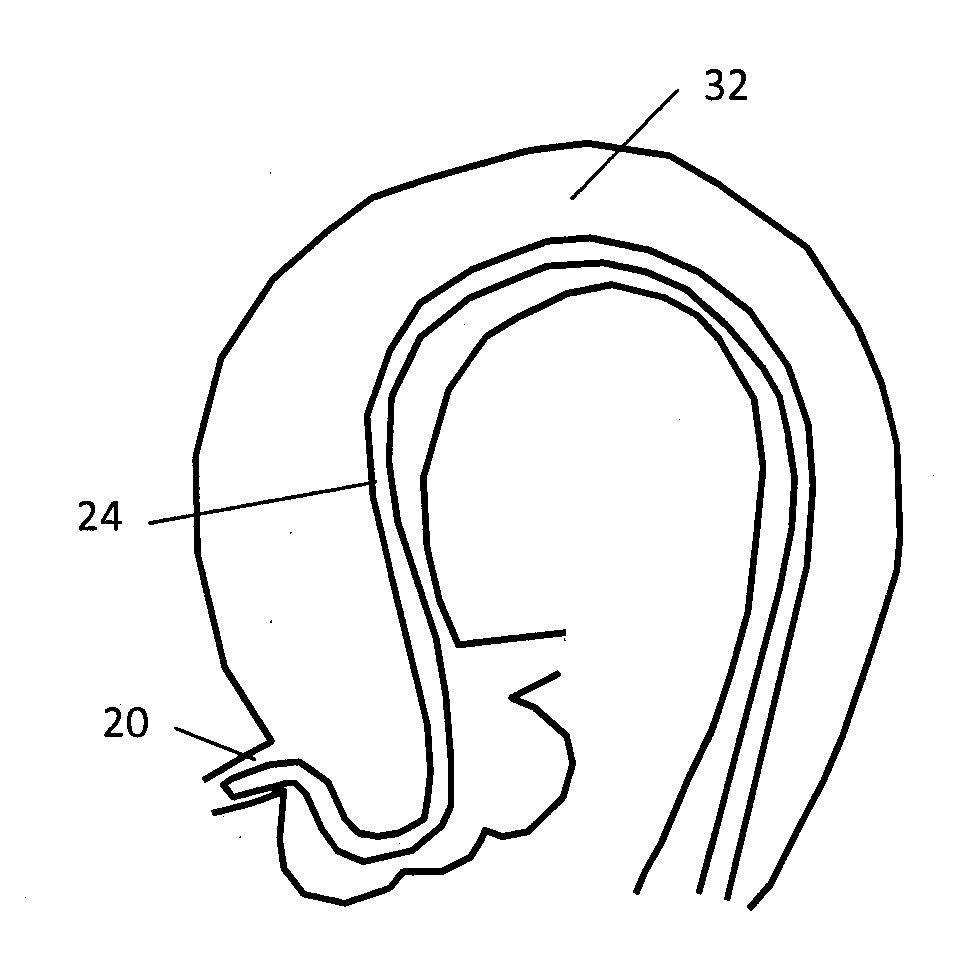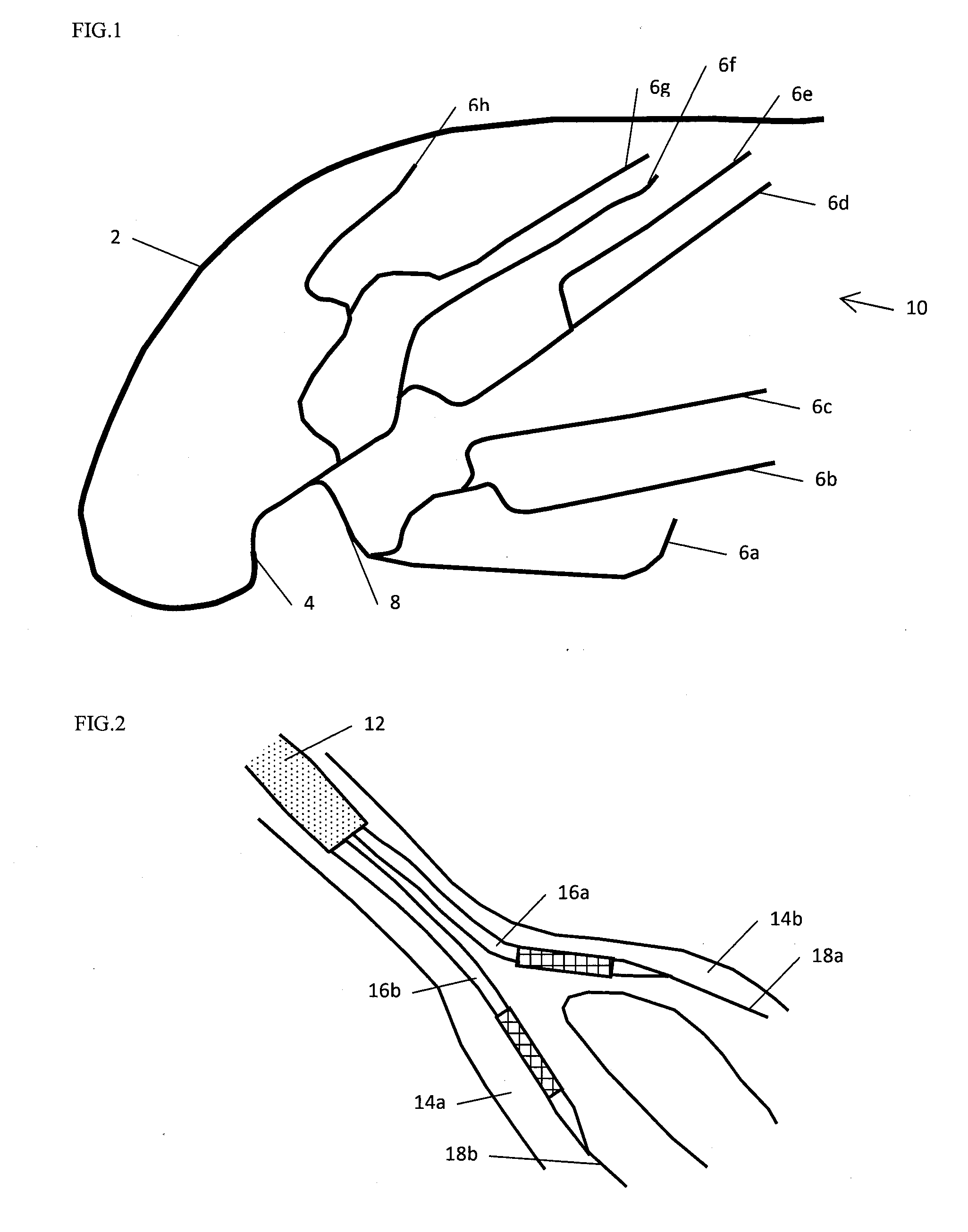Stent and stent delivery system with improved deliverability
a technology applied in the field of stent and stent delivery system with improved deliverability, can solve the problems of less legacy, not optimized for thickness, limited deployment flexibility, and minimalization of vessel wall intrusion, so as to reduce the intrusion of the vessel wall, improve the deliverability, and facilitate the deployment.
- Summary
- Abstract
- Description
- Claims
- Application Information
AI Technical Summary
Benefits of technology
Problems solved by technology
Method used
Image
Examples
example 1
[0307]This example illustrates embodiments that provide a coated coronary stent, comprising: a stent framework and a rapamycin-polymer coating wherein at least part of rapamycin is in crystalline form and the rapamycin-polymer coating comprises one or more resorbable polymers.
[0308]In these experiments two different polymers were employed:[0309]Polymer A: −50:50 PLGA-Ester End Group, MW˜19 kD, degradation rate ˜1-2 months[0310]Polymer B: −50:50 PLGA-Carboxylate End Group, MW˜10 kD, degradation rate ˜28 days
[0311]Metal stents were coated as follows:[0312]AS1: Polymer A / Rapamycin / Polymer A / Rapamycin / Polymer A[0313]AS2: Polymer A / Rapamycin / Polymer A / Rapamycin / Polymer B[0314]AS1 (B) or AS1(213): Polymer B / Rapamycin / Polymer B / Rapamycin / Polymer B[0315]AS1b: Polymer A / Rapamycin / Polymer A / Rapamycin / Polymer A[0316]AS2b: Polymer A / Rapamycin / Polymer A / Rapamycin / Polymer B
example 2
[0317]The presence and or quantification of the Active agent crystallinity can be determined from a number of characterization methods known in the art, but not limited to, XRPD, vibrational spectroscopy (FTIR, NR, Raman), polarized optical microscopy, calorimetry, thermal analysis and solid-state NMR.
X-Ray Diffraction to Determine the Presence and / or Quantification of Active Agent Crystallinity
[0318]Active agent and polymer coated proxy substrates are prepared using 316L stainless steel coupons for X-ray powder diffraction (XRPD) measurements to determine the presence of crystallinity of the active agent. The coating on the coupons is equivalent to the coating on the stents described herein. Coupons of other materials described herein, such as cobalt-chromium alloys, may be similarly prepared and tested. Likewise, substrates such as stents, or other medical devices described herein may be prepared and tested. Where a coated stent is tested, the stent may be cut lengthw...
example 3
SEM-In-Vitro Testing-Coating Visualization
[0329]Testing of delamination and / or cracking may be achieved by visual inspection. Visual inspection may involve the use of various microscopy techniques which allow visualization of defects in the stent coating.
[0330]Testing may be performed prior to and following in-vitro deliverability testing according to Tortuosity Test 1 or Tortuosity Test 2, as noted herein. The dried stent is visualized using SEM for changes in coating.
[0331]Testing may be performed prior to and following in-vivo deliverability testing according at time 0. A dried stent is visualized using SEM for changes in coating.
[0332]For example the samples are observed by SEM using a Hitachi S-4800 with an accelerating voltage of 800V. Various magnifications may used to evaluate the coating integrity, especially at high strain or high stress regions.
[0333]In order to determine the percentage of delamination, the abluminal surface (or a statistically relevant portion thereof) m...
PUM
 Login to View More
Login to View More Abstract
Description
Claims
Application Information
 Login to View More
Login to View More - R&D
- Intellectual Property
- Life Sciences
- Materials
- Tech Scout
- Unparalleled Data Quality
- Higher Quality Content
- 60% Fewer Hallucinations
Browse by: Latest US Patents, China's latest patents, Technical Efficacy Thesaurus, Application Domain, Technology Topic, Popular Technical Reports.
© 2025 PatSnap. All rights reserved.Legal|Privacy policy|Modern Slavery Act Transparency Statement|Sitemap|About US| Contact US: help@patsnap.com



